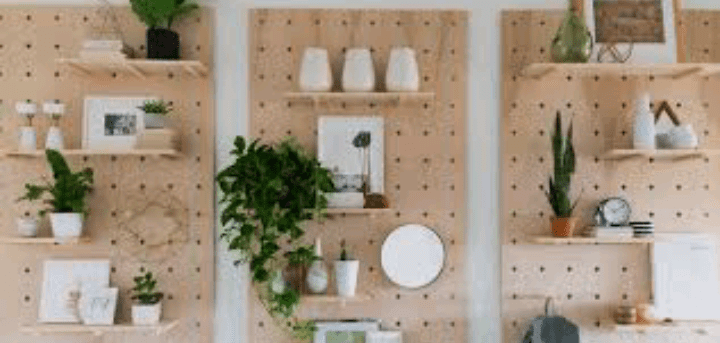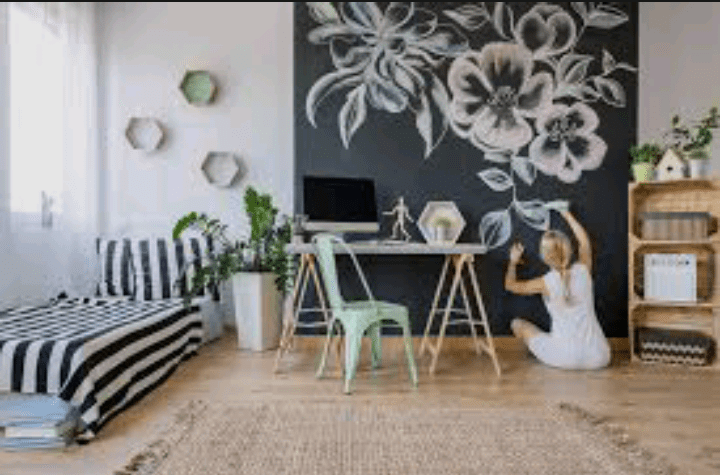DIY home decor opens the door to a world of creative possibilities, allowing you to transform your living spaces into personalized havens. In the realm of home improvement, there’s something uniquely satisfying about crafting decor that reflects your style and personality.
Whether you’re a seasoned DIY enthusiast or a newcomer eager to embark on your first project, this guide is here to inspire and guide you through the exciting journey of turning your house into a home.
In the hustle and bustle of our daily lives, our homes serve as sanctuaries—a place to unwind, recharge, and express our individuality. DIY home decor empowers you to add a personal touch to every nook and cranny, making your living space not just functional but a true reflection of who you are. From simple tweaks to more ambitious undertakings, there’s a DIY project for every skill level and budget.
This guide will walk you through the foundational principles of design, providing a solid understanding of balance, proportion, unity, contrast, rhythm, and emphasis. Armed with these principles, you’ll be well-equipped to tackle a variety of DIY projects, from beginner-level endeavors to more advanced feats.
We’ll explore budget-friendly ideas that prove decorating your space need not be an expensive affair. With relatable examples and step-by-step guidance, you’ll discover how to breathe new life into your home with creativity and flair.
So, whether you’re looking to revamp your living room, add character to your kitchen, or create a cozy haven in your bedroom, join us on this DIY adventure. Together, let’s explore the joy of transforming your living spaces and unlocking the potential within your four walls. Get ready to roll up your sleeves and discover the immense satisfaction of saying, “I made that!”
Read also: DIY: Tips for Becoming a Dreamcatcher Pro
DIY Home Decor

1. The Foundation – Understanding Design Principles
Before going into the world of DIY home decor, it’s essential to grasp the fundamental design principles that govern visually appealing spaces. The principles of balance, proportion, unity, contrast, rhythm, and emphasis serve as the building blocks of successful interior design.
A. Balance
Balance is key to achieving a harmonious look in your home decor. There are two types of balance: symmetrical and asymmetrical. Symmetrical balance involves arranging elements evenly on both sides of a central axis, creating a sense of order. Asymmetrical balance, on the other hand, relies on the careful arrangement of different elements to achieve equilibrium.
Achieve symmetrical balance by placing identical table lamps on either side of a console table in your entryway.
B. Proportion
Proportion refers to the relationship between the sizes of different elements in a space. Maintaining proper proportion ensures that no single element overwhelms the others, creating a visually pleasing environment.
Choose a sofa that complements the size of your living room, allowing for a comfortable seating arrangement without overcrowding the space.
C. Unity
Unity is the cohesive factor that ties a room together. It involves creating a sense of oneness by using similar colors, patterns, or themes throughout a space.
Unify your dining room by selecting chairs that share a common design element with the dining table or by using a consistent color palette for the tableware.
D. Contrast
Contrast adds visual interest to a room by highlighting differences between elements. It can be achieved through color, texture, or shape.
Introduce contrast in a neutral bedroom by incorporating vibrant throw pillows or a textured area rug.
E. Rhythm
Rhythm guides the eye through a space, creating a sense of movement and flow. It can be achieved through repetition, progression, or alternation of elements.
Create rhythm in a hallway by hanging a series of framed family photos at equal intervals.
F. Emphasis
Emphasis draws attention to a focal point in a room. It could be a statement piece of furniture, an accent wall, or a striking piece of artwork.
Make a bold statement in your living room by placing a vibrant, oversized painting above the fireplace.
2. DIY Techniques for Every Skill Level
Armed with an understanding of design principles, it’s time to explore a variety of DIY techniques that cater to different skill levels. Whether you’re a novice or an experienced DIYer, there’s a project for everyone.
A. Beginner Projects
For those just starting, simple and achievable projects provide a great introduction to the world of DIY home decor. These projects often require minimal tools and materials, making them accessible to everyone.
Create personalized wall art by framing your favorite fabric or wallpaper samples.
B. Intermediate Projects
As your skills progress, intermediate-level projects allow for a bit more complexity and creativity. These might involve basic carpentry, painting techniques, or the use of power tools.
Transform a plain dresser into a statement piece by applying a stenciled design and changing the hardware.
C. Advanced Projects
For seasoned DIY enthusiasts, advanced projects offer the opportunity to tackle more intricate designs and ambitious ideas. These could include building custom furniture, installing intricate tile patterns, or even remodeling entire rooms.
Construct a built-in bookshelf with integrated lighting to showcase your book collection and add a touch of sophistication to your living space.
3. Budget-Friendly DIY Decor Ideas
DIY home decor doesn’t have to break the bank. In this chapter, we explore budget-friendly ideas that allow you to revamp your space without a hefty price tag.
A. Upcycling Furniture
Give new life to old furniture by upcycling. Sanding, painting, and adding new hardware can transform a thrift-store find into a unique and stylish piece.
Turn an outdated coffee table into a chic centerpiece by painting it in a trendy color and adding metallic legs.
B. Thrift Store Treasures
Scouring thrift stores can unearth hidden gems that, with a little creativity, can become standout decor items in your home.
Find vintage frames to create a gallery wall for displaying family photos or artwork.
C. DIY Textile Projects
Textiles are a cost-effective way to refresh your home decor. From making your own curtains to sewing custom pillow covers, there are numerous possibilities.
Sew your own throw pillows using inexpensive fabric remnants for a pop of color on your sofa.
Read also: How to Choose the Right Mason Jar Decor for Your Home
4. Room-Specific DIY Inspiration
Now that you’ve acquired a repertoire of DIY skills and budget-friendly ideas, let’s apply them to specific rooms in your home.
A. Living Room
The living room is often the focal point of a home, and DIY projects can enhance its warmth and style. Consider projects like creating a custom media console, building a unique coffee table, or crafting personalized wall art.
Building a floating shelf unit to showcase a combination of books, plants, and decorative items, adding both storage and visual interest to your living room.
B. Kitchen
In the heart of the home, the kitchen can benefit from DIY projects that improve functionality and aesthetics. Explore ideas such as building open shelving, refinishing cabinets, or creating a custom backsplash.
Upgrade your kitchen island by adding a butcher block top and open shelving for a more personalized and functional workspace.
C. Bedroom
Transform your bedroom into a tranquil retreat with DIY decor projects. Consider creating a custom headboard, repurposing old furniture, or crafting unique bedside tables.
Design a DIY upholstered headboard using your favorite fabric, adding a touch of luxury to your bedroom.
D. Home Office
With the rise of remote work, home offices have become essential spaces. Enhance productivity and aesthetics with DIY projects like building a custom desk, organizing with floating shelves, or creating a feature wall.
Construct a wall-mounted desk with built-in storage to maximize functionality in a small home office space.
5. Tips for Success and Pitfalls to Avoid
As you embark on your DIY home decor journey, it’s important to keep certain tips in mind to ensure success and avoid common pitfalls.
A. Measure Twice, Cut Once
Precision is key in DIY projects. Always measure and plan before making any cuts or purchases to avoid costly mistakes.
B. Invest in Quality Tools
While DIY projects can be cost-effective, investing in quality tools is crucial for achieving professional-looking results. Good tools make the job easier and ensure safety.
C. Test Colors and Finishes
Before committing to a paint color or finish, test it in a small, inconspicuous area to ensure it complements your existing decor and lighting.
D. Patience is a Virtue
Rome wasn’t built in a day, and neither is a perfectly decorated home. Take your time with each project, and don’t rush the process.
E. Learn from Mistakes
Mistakes happen, even to the most experienced DIYers. Instead of getting discouraged, view them as learning opportunities and a chance to improve.
6. Showcasing Your DIY Achievements
After putting in the time and effort to revamp your home, it’s time to showcase your DIY achievements proudly. Whether through social media, personal blogs, or in-person gatherings, sharing your projects can inspire others and create a sense of accomplishment.
Create a dedicated Instagram account to document your DIY journey, sharing before-and-after photos and engaging with a community of like-minded individuals.
